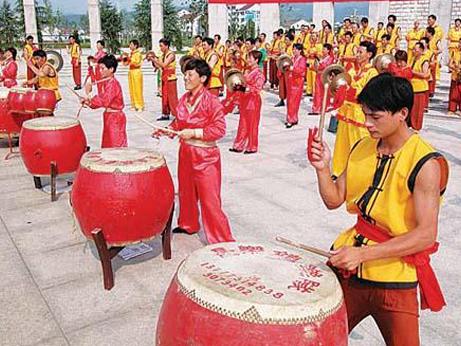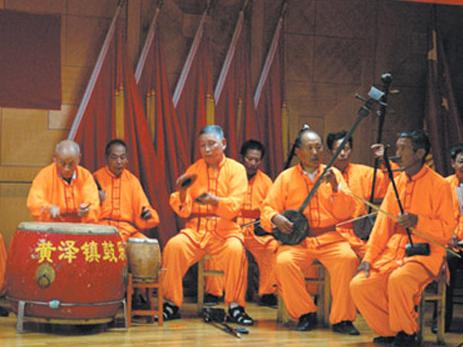
Shengzhou Chuida (wind and percussion) originated from the temple fair culture and has a close connection with the Buddhist music. It is a kind of folk music performed by instruments such as the gong, drum, urheen, jinghu, sanxian, cymbal, suona, trombone, and so on.
Shengzhou Chuida is a chief component of Zhedong Luogu (eastern Zhejiang gong and drum music). Zhejiang Luogu (also called "Guchui" in the folk) refers to the ethnic and folk music in the eastern and southern parts of Zhejiang Province. The difference between Zhejiang Luogu and string and bamboo flute music is that suona, xianfeng (trombone) and horn are used in the former band. The Large Yuanmen Gate, Duhua, Embroidered Ball, Shifan are the major traditional repertoires of Shengzhou Chuida, meanwhile they are also the representatives of Zhedong gong and drum music.

The most distinctive characteristic of Shengzhou Chuida is that it uses the combination of percussion instruments of "five small gongs and four large gongs". From 1949 to the 1980s, the eastern school and western school of Shengzhou folk music are developed. The western school, with farmers in Changle Town as the representative, developed a performance method of combining gong and drum with piping instruments. When playing the "Jianhao" (sharp trumpet), the actors intake the air instead of blowing the air so as to make the trumpet call louder, more forceful and penetrating. The performance method of inhaling air is unique in the performance of folk music all over China. The characteristic of band composition is the combination of "five gongs, three drums and three large gongs", and the wind instruments include suona, trombone, etc. Besides, the stringed instruments are also used in this school. The eastern school, represented by farmers in Huangze, is prone to use stringed instruments. The tunes of this school are soft and tender, and most of the play lists are folk tunes, ballads as well as some traditional works of the string and bamboo flute music.





